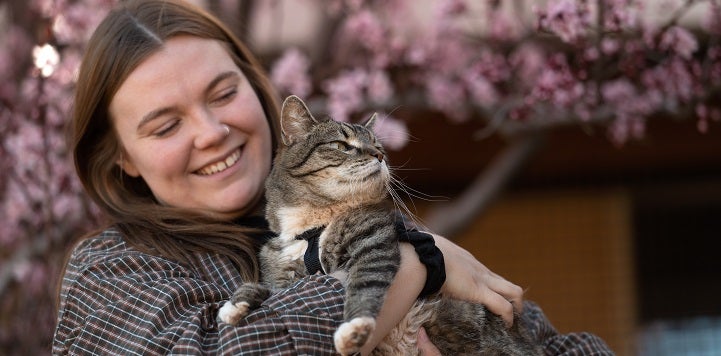
Setting the stage for strategic intake
Why your shelter should consider changing the rules around accepting owner surrender animals
Managed intake. Coordinated entry. Intake diversion. Strategic intake strategies. No matter what they’re called, the principle behind these programs is the same: to find positive outcomes for as many animals as possible that don’t involve them coming into your shelter.
A number of organizations got the chance to try strategic intake strategies on for size during COVID, but not everyone implemented it in a successful way. That’s because such programming involves more than just scheduling intake sometime in the future.
The strategic part of the program refers to the relationships and resources a shelter builds out so that it becomes a partner in keeping pets with their families or helping the public rehome them on their own. Without such pieces in place, shelter services aren’t truly “managed” at all. In fact, they probably just manage to draw fire from a very unhappy community and don’t succeed in achieving the ultimate goal of helping people and animals.
Defining strategic intake services
Public critics of strategic intake services argue that such programs amount to nothing more than shelters turning people away at the door, leaving the public without resources and risking pets being dumped on the street. Staff feel that scheduling intakes a few weeks or months out just delays the inevitable with no guarantee the shelter will be any less crowded or under-resourced when people return for their appointment. Field services personnel feel adrift when dealing with intense issues out in the community if they don’t have any solutions to offer the public.
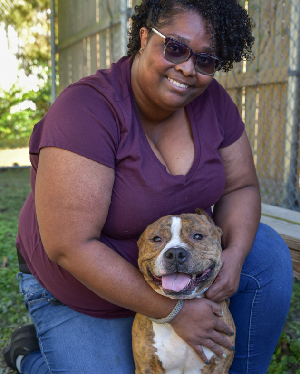 That approach is not an example of strategic intake at all, the philosophy behind which evolved to solve a number of problems. As Kate Hurley, DVM, director of University of California Davis Shelter Medicine program, lays out in her study The Evolving Role of Triage and Appointment-Based Admission to Improve Service, Care and Outcomes in Animal Shelters:
That approach is not an example of strategic intake at all, the philosophy behind which evolved to solve a number of problems. As Kate Hurley, DVM, director of University of California Davis Shelter Medicine program, lays out in her study The Evolving Role of Triage and Appointment-Based Admission to Improve Service, Care and Outcomes in Animal Shelters:
“In addition to needlessly impounding animals and separating pets from families, unmanaged/unscheduled admission frequently results in animal influx exceeding shelter capacity, leading to crowding, stress, disease, and euthanasia of animals, as well as poor customer experience, compromised staffing efficiency and decreased organizational effectiveness.”
Though it fits our industry to a T, Kate also points out that the concept didn’t come from animal welfare at all:
“Triage and appointment-based services have been well-developed in healthcare and other service sectors, allowing organizations to prioritize the most urgent cases, align services with organizational resources and provide situation-specific solutions that may include virtual support or referral as appropriate.”
In a nutshell, that’s a succinct summation of how shelters should be approaching strategic intake services for their communities.
Taking a closer look at shelter programs
While such problems may be the same from organization to organization, shelter intake programs don’t have to look exactly the same from organization to organization.
“Every organization has its own version of coordinated entry or managed intake depending on what their community looks like and what resources they have to offer,” says Michelle Dosson, executive director of Best Friends’ Salt Lake City program.
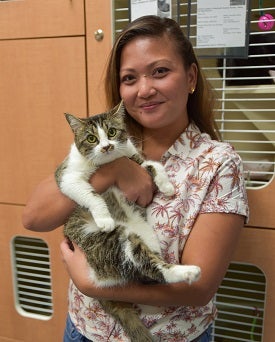 From 2020 to 2022, Michelle was bureau manager of Norfolk Animal Care and Adoption Center (NACC) in Virginia, which serves a community that includes many military personnel, who often deploy with little notice. When she arrived at NACC, the shelter had no intake management/ retention plan.
From 2020 to 2022, Michelle was bureau manager of Norfolk Animal Care and Adoption Center (NACC) in Virginia, which serves a community that includes many military personnel, who often deploy with little notice. When she arrived at NACC, the shelter had no intake management/ retention plan.
“Every animal had a guaranteed immediate intake, and the shelter was still euthanizing to make space,” she says
When Alison Fechino became executive director with Portsmouth Humane (Portsmouth) in Virginia three years ago, the shelter’s managed intake program consisted almost entirely of just setting up appointments for a later admission date.
“No matter what the animal load was in our building, no matter what the need was for support, if people wanted to give us anything but a stray animal, they had to wait an arbitrary two weeks,” she says. “It didn't change how the population was handled because there was no logic to it.”
Since it was clearly not solving the challenges the shelter faced, Alison set to work tweaking the program.
“We changed our approach to be more focused on how many open cages we had and what the level of need was with the person making that phone call,” she says. “We just made more thoughtful choices about how we managed the animals coming in.”
Changing the function of intake staff
Although Portsmouth didn't have the staffing to offer more intensive support and resources at that time, once a position was vacated Alison hired Teresa Stephens as a community engagement manager to do just that.
“Teresa used to be a 911 dispatcher and she's used to having very high-stakes conversations with people,” Alison says. “She spends the time needed with people to ask enough questions to get to the root of the problem, and then tries to figure out what they need to successfully keep their pet.”
“We waste a lot of time trying to solve problems that are not really the problem,” Michelle says. “People say they’re moving so we spend a lot of time giving them pet-friendly housing resources, only to find out that really their landlord gave them an ultimatum because their dog is barking too much. People often come up with a reason that makes it OK for them to relinquish their pet.”
Now the staff at NACC is trained in how to help the public keep or rehome their pet. They offer printed and online resources, pet-retention grants for things like vet care and pet deposits and safety-net foster options. The team will also call landlords to find out what the issue is and how it can be resolved without the animal having to leave the home.
“Many of them are very receptive and appreciative that their tenants are trying to fix the problem,” Michelle says. “We've even had people say, ‘My landlord said I can get a friend for my pet’ and they come back and adopt again.”
Measuring program success
In addition to giving the public their undivided attention, Alison says she found the changes at PHS created a smoother customer experience overall.
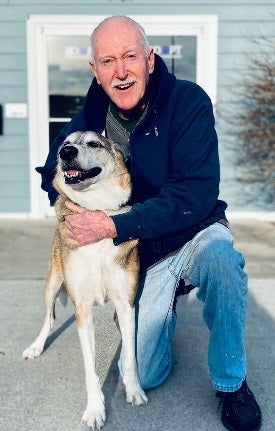 “We got better information about the pet by having one person handle them from first phone call to intake,” she says. “Once our other front desk staff started hearing from Teresa about why pets were actually coming in and learning about the relationships that she developed with these pet owners, that created a lot more empathy. It also built a much more supportive environment for the changes in our system.”
“We got better information about the pet by having one person handle them from first phone call to intake,” she says. “Once our other front desk staff started hearing from Teresa about why pets were actually coming in and learning about the relationships that she developed with these pet owners, that created a lot more empathy. It also built a much more supportive environment for the changes in our system.”
And the results of approaching intake of owned animals differently speak to its success. In 2020, before Portsmouth revised its program, 50% of scheduled surrenders were “no-shows,” though in reality many of those scheduled surrenders came in as "strays" or simply showed up unannounced.
“We were getting the intakes but without a plan or much information on the pet,” Alison says.
Now around 2% are no-shows, and 58% of the clients the shelter has worked with since the start of the program were able to keep their pets out of the shelter, either via self-rehoming or resolving the issue with guidance.
“One of my favorite components of our managed intake program is that if pet owners aren’t comfortable with self-rehoming or have unaltered/unvaccinated pets, we’ll take them into our custody but have the owner foster the animal and handle all the adoption appointments,” Alison says “The vet care, adoption fee and paperwork all go through the shelter, but the pet never takes up a cage because it’s still living in its previous home. We have a lot of success with that model.”
In NACC, Michelle entrusted the staff to set up action items with owners to do while waiting for their intake appointment. The staff also does mid-point check-ins to see how people are progressing with their rehoming or training efforts, for instance, and whether they need more help.
“The biggest change by far is that the staff is now having conversations to figure out the root cause of why they're coming for help,” Michelle says. “Once we know that, we can provide them with resources that are truly relevant. In addition to the anecdotal measures, it’s important that shelters keep the data so they can point to hard numbers that show the difference this approach makes in the community.”
As for those numbers: in 2019, 4,576 animals came into NACC and the shelter had a 74.3% save rate. By 2021, after the new program had been in place for two years, 1,000 fewer animals came into the shelter and 93% were saved.
Recognizing deeper impacts of changed strategy
Planning intake services strategically has an obvious impact on quality of life for shelter animals since there are fewer of them coming in at one time. However, the impact strategic intake services have on staff is what Michelle and Alison find to be the most compelling reason for change.
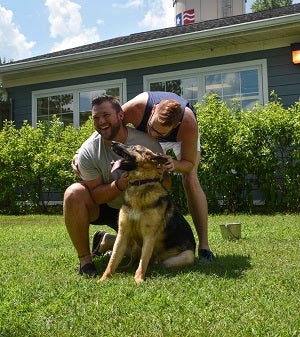 “Nobody wants to see somebody sad when they're presenting their animals, especially because we tend to take on those emotions,” Michelle says. “Changing the way we process intakes at NACC helped the emotional well-being of staff to not constantly be in a state of distress.
“Nobody wants to see somebody sad when they're presenting their animals, especially because we tend to take on those emotions,” Michelle says. “Changing the way we process intakes at NACC helped the emotional well-being of staff to not constantly be in a state of distress.
“Instead of that constant heartbreak that we have to see people leaving their animals at the shelter, we started seeing people keep their beloved pets or find homes they felt comfortable sending their animals to,” she adds. “And the staff got to celebrate those successes.”
Anybody who is in taking animals or helping the community with such emotionally charged situations every day needs a chance to celebrate – and to recharge their own batteries. That’s Michelle’s last point about strategic intake services: it gives animal shelter staff a break from a job that can be literally overwhelming.
“As an industry, we have been not good at setting boundaries and personal space for ourselves,” Michelle says. “We’re all human and we all hit the wall where we just cannot talk to one more person in distress. Once we hit that wall, we need to take a break for our own sanity and health.
“Ultimately, these types of programs come down to having compassion – for the public, for the animals and for us,” Michelle adds. “We need to make sure our compassion cups are filled enough to be able to connect with people, to take care of them while also taking care of ourselves in the process. I can’t picture an approach to our work that’s more strategic than that.”
Check out our proven strategies on intake to learn more.

Liz Finch
Senior Writer
Best Friends Network
If you enjoyed this program spotlight, you can find our complete catalog of spotlights here.